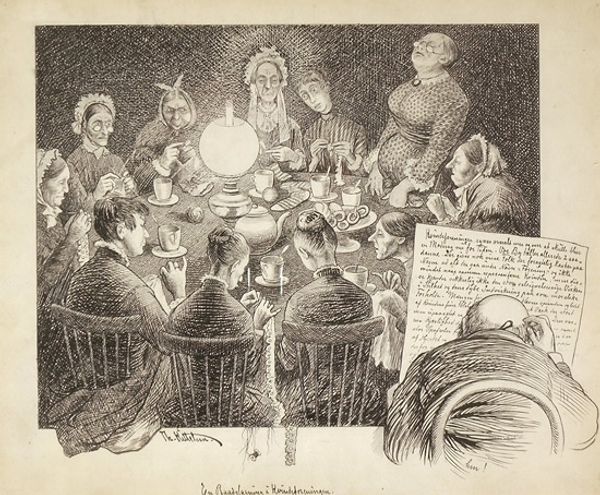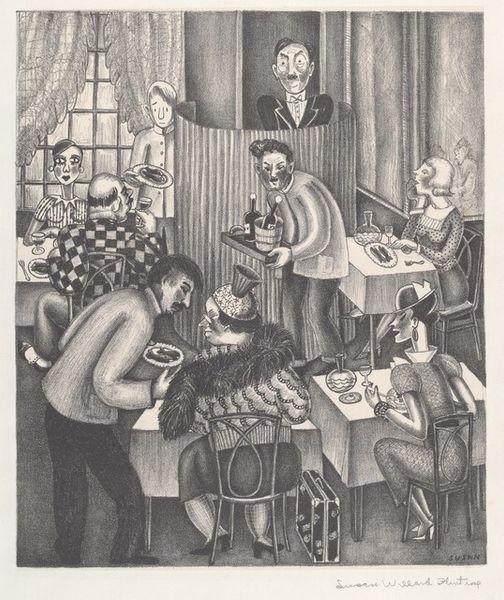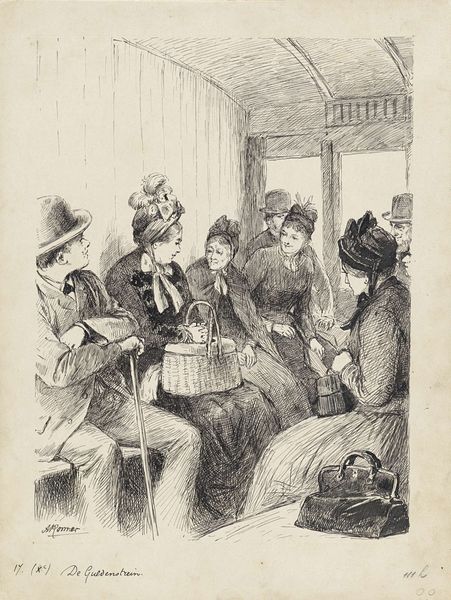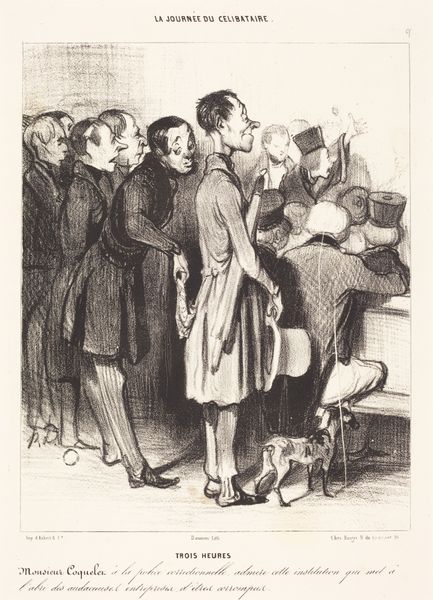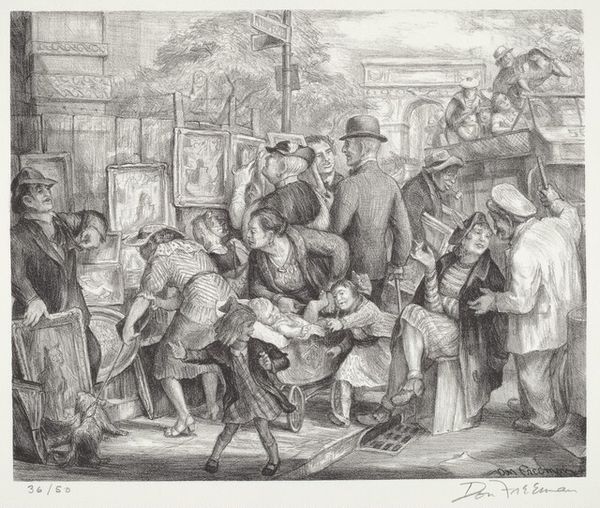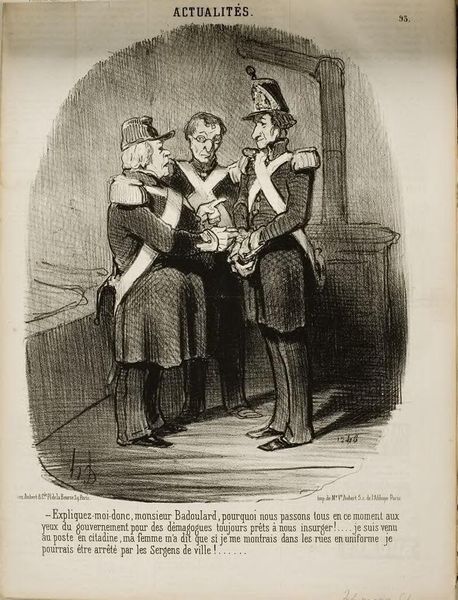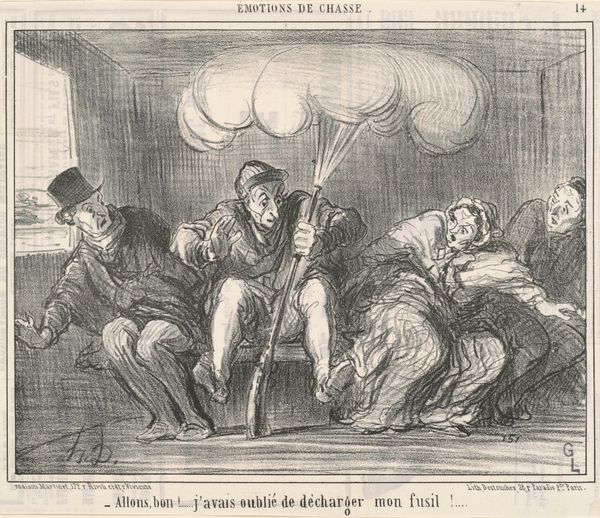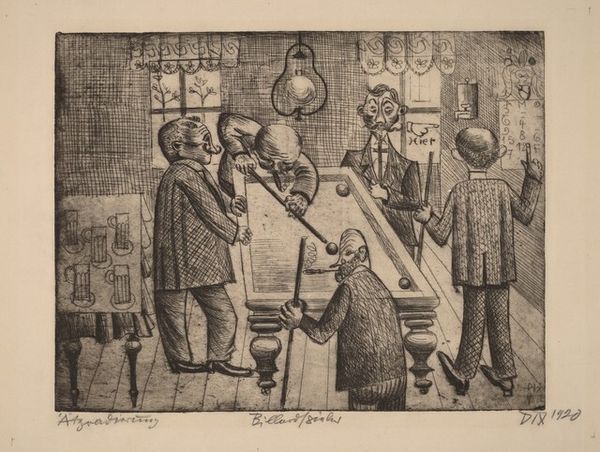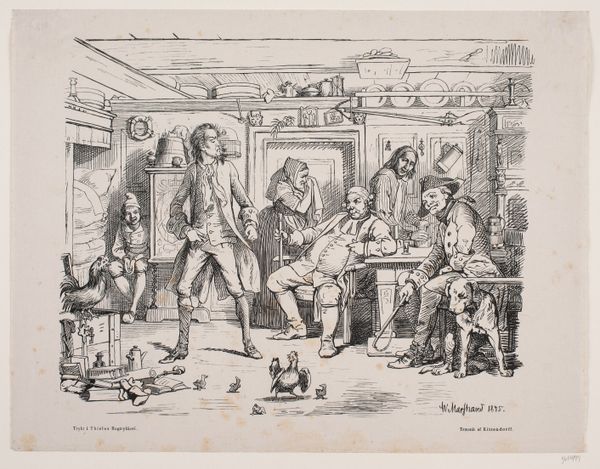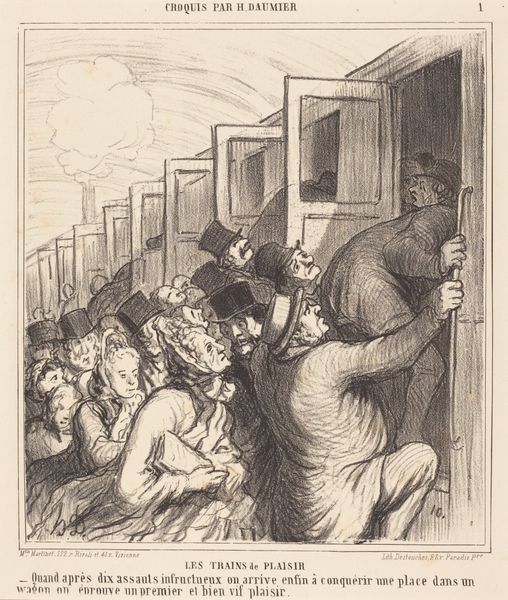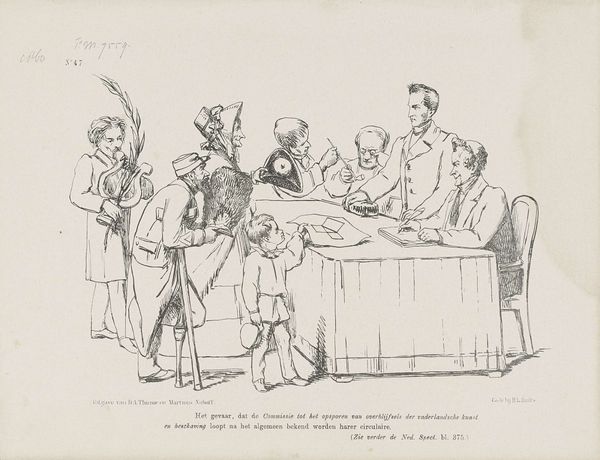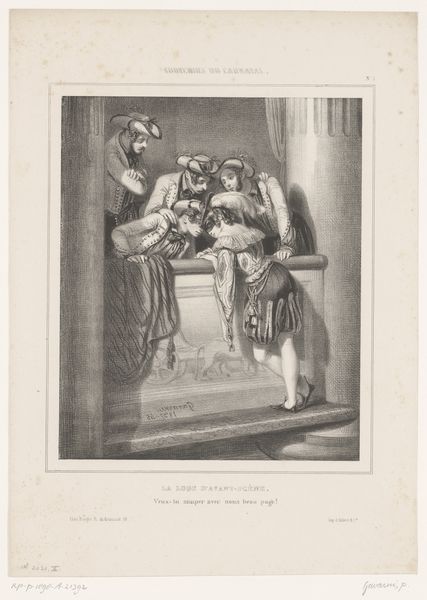
drawing, print, pencil
#
portrait
#
pencil drawn
#
art-deco
#
drawing
# print
#
pencil sketch
#
charcoal drawing
#
pencil drawing
#
pencil
#
portrait drawing
#
genre-painting
Dimensions: image: 205 x 294 mm sheet: 296 x 424 mm
Copyright: National Gallery of Art: CC0 1.0
Curator: Minna Citron's print, "Beauty Culture," made in 1933, gives us a peek into a beauty salon of the time. The medium is pencil and print. Editor: It feels incredibly intimate, like we're overhearing a private moment, or maybe we are being invited into a space that usually excludes us. There's a sense of both leisure and tension in the air. Curator: Certainly. Citron often turned her attention to depicting urban life and its social rituals. In the 1930s, beauty salons were becoming increasingly popular spaces for women. They not only offered cosmetic treatments but also served as important sites of social exchange. Editor: And a performance of femininity. You've got everything in there that speaks about it. The ladies' big hats and shoes... it makes me wonder, who gets to enjoy such leisure, and who is making it possible? Curator: That’s an insightful point. Consider the social dynamics at play. The women in the salon are primarily consumers, benefiting from services provided by, likely, women of a different social class. Citron subtly acknowledges the service workers in the composition, and it's possible that these class dynamics informed her social critique. Editor: This piece certainly feels like a commentary. The focus on appearance, the almost robotic nature of the beauty treatments. It asks us to consider the roles women play and the expectations placed upon them, and to examine how economic class can so strongly impact these social spaces. It is also a space in which the female gaze could also become a form of surveillance over other women’s roles. Curator: Definitely. "Beauty Culture" presents a multifaceted perspective on gender, labor, and consumption during the interwar period, and that gaze is further informed by how women perceived themselves through others. Editor: Thinking about "Beauty Culture", I keep finding layers I hadn't noticed, layers that resonate with discussions around labour and identity. Curator: Indeed. It makes you appreciate Citron's skill as a social observer and commentator.
Comments
No comments
Be the first to comment and join the conversation on the ultimate creative platform.
